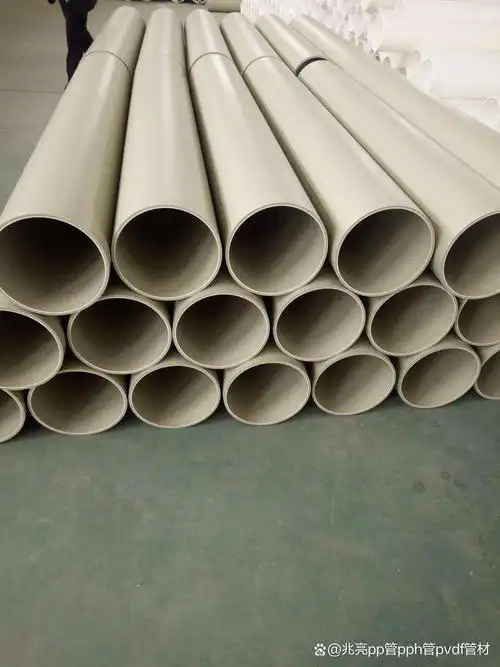The PP pipes produced by Longchangjie Machinery have excellent performance. However, to select high-quality PP pipes (polypropylene pipes), a multi-dimensional evaluation is required. The following mainly focuses on the comprehensive appearance, physical properties, combustion characteristics, and national standards for identification
1. Visual and Tactile inspection
· Surface condition : High-quality PP pipes have a uniform color (mainly milky white or light gray), with smooth and flat inner and outer walls, free of bubbles, cracks or impurities. Inferior products are dark in color, have impurities or have a rough surface.
· Clarity of marking : The tube body should have clear spray codes, including brand, execution standard (such as GB/T 18742.2-2017), specification model, and be not easy to erase.
· wall thickness uniformity : consistent hand feel, no local uneven thickness; After folding in half, the folded area should be evenly white. If it is dark or layered, it may be mixed with materials such as PE.
2. Physical property testing
· buoyancy test : pure PP with a density of 0.90-0.91 g/cm³ should float on the water surface; Sinking may contain high-density fillers such as calcium carbonate.
· bending and impact :
-High-quality PP has good toughness and is not easy to break when folded (inferior products are prone to cracking).
- Dull landing sound, good resilience .
· drawing test : after burning and drawing, pure PP can be drawn into uniform long filaments with good elasticity; If the wire breaks, has lumps or cannot be drawn, it indicates that there is a lot of filler and the purity is low .
3. Identification of Combustion characteristics
· Flame and smoke : When pure PP burns, the flame is yellow at the top and blue at the bottom, with no black smoke. Black smoke or a pungent odor (such as the smell of burnt wool) may contain impurities.
· Dripping and odor : The dripping speed of the molten material is uniform, and the odor is similar to that of petroleum. If it drips too quickly or has a chemical odor, it may be mixed with recycled materials.
· residue : There is little residue after combustion and the bubbles are fine (large bubbles indicate excessive additives or color types).
4. Professional Indicators and certifications
· Execution standard : Comply with national standards GB/T 18742 series (pipes/fittings), SY/T 7041 (anti-corrosion coating), etc. In particular, water supply pipes need to meet the hygiene standard GB 17219.
· mechanical properties :
- Compressive strength ≥30 MPa, temperature resistance range -20℃ to 95℃ (up to 95℃ for PP-R pipes);
- For high-demand scenarios (such as chemical industry), the glass fiber reinforced type (FRPP) can be selected, with the pressure resistance increased to 1.6MPa .
· Test report : Request the manufacturer 's test data on compressive strength, aging resistance (such as ultraviolet light sensitivity), etc. .
5. Application scenario adaptation
· type selection :
- Building hot and cold water: PP-R pipes (good high-temperature resistance, hot-melt connection);
- Industrial corrosive environment: FRPP pipe (acid and alkali resistant, strong pressure resistance);
- Ventilation system: PP air ducts (lightweight and corrosion-resistant, wall thickness ≥3mm) .
· specification parameters :
Wall thickness and SDR value: The smaller the SDR, the greater the wall thickness (for example, the S2 series can withstand a pressure of 2.5MPa, and the S5 series can withstand 1.25MPa) ;
Purchase notes
· Avoid the low-price trap : Products with significantly low prices and no labels often contain recycled materials, have a short lifespan and are prone to toxic leakage .
· quality of connecting parts : Check whether the welding points of pipe fittings are smooth and free of burrs to avoid gas/liquid leakage .
· Customized requirements : For special working conditions (such as high-temperature exhaust gas), the manufacturer should be requested to provide a temperature resistance test report .


